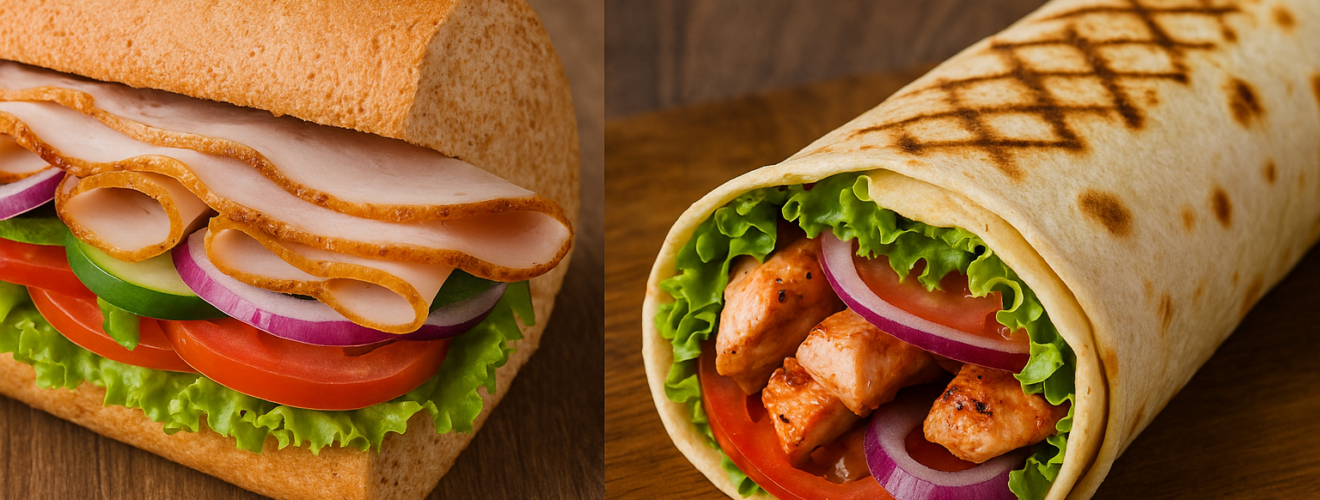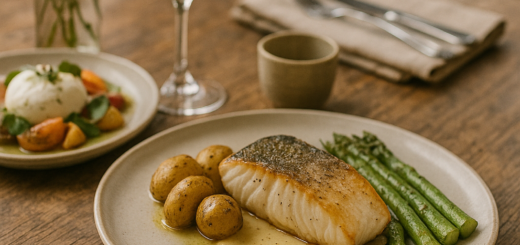Subway vs. Wraps & Rolls – Healthier Choice?

The fast-food industry has seen a dramatic shift in recent years. More consumers now seek quick meals without sacrificing their health. Amidst this trend, Subway and Wraps & Rolls have emerged as two go-to options for health-conscious eaters. Both brands offer customizability, a wide range of vegetables, lean proteins, and quick service. But which one actually delivers healthier meals? This article compares Subway and Wraps & Rolls on nutrition, ingredients, preparation methods, portion sizes, and customer satisfaction to help you make informed choices.
Brand Philosophy and Menu Overview
Subway built its brand around health and freshness. It began promoting itself as a healthy alternative to burgers and fried fast food long before other chains caught up. The brand emphasizes customization and allows customers to control every element of their sandwich, from bread to toppings.
Wraps & Rolls, on the other hand, focuses on bold flavors with a desi twist. The brand offers kathi rolls, paratha wraps, and wheat wraps stuffed with everything from paneer tikka to chicken seekh. Wraps & Rolls appeals to consumers who crave Indian spices and street-style flavors but still want a more nutritious format.
Both brands market their meals as quick, satisfying, and better than deep-fried or greasy fast food. However, the difference lies in how they interpret health and how they build their products.
Ingredient Quality and Variety
Subway allows customers to pick from multiple types of bread—white, whole wheat, multigrain, and even flatbread. They offer plenty of protein choices like grilled chicken, tuna, turkey, paneer tikka, and even plant-based patties. Every sandwich gets topped with unlimited vegetables: lettuce, cucumbers, tomatoes, onions, olives, jalapeños, and more.
Wraps & Rolls offers slightly fewer vegetable options, but it compensates with flavorful fillings. The brand uses ingredients like spiced chicken, malai tikka, and sautéed vegetables in Indian masala. Many options use wheat-based flatbreads or roti-style wraps instead of deep-fried parathas. However, some versions still rely on oil-rich preparations.
Subway sources most of its vegetables fresh and stores them cold to retain crunch and nutrients. Wraps & Rolls cooks its fillings in advance and reheats them before assembly. While both brands use real ingredients, Subway avoids heavy oils, whereas Wraps & Rolls focuses more on flavor and spice.
Verdict: Subway wins for offering fresher vegetables and leaner preparation.
Nutritional Breakdown: Calories, Carbs, and Protein
Subway provides clear nutritional data for all its sandwiches. You can build a six-inch sub with under 400 calories if you skip cheese and mayo. A grilled chicken sub with multigrain bread, loaded with veggies, contains around 25 grams of protein and 5 grams of fat. Even full 12-inch subs stay under 700 calories with smart choices.
Wraps & Rolls does not always publish detailed nutritional info, especially in smaller outlets. However, a typical chicken wrap contains 500–600 calories. If made with a buttered paratha and paneer, the count can cross 700 calories easily. Rolls often use sauces like mayonnaise, mint chutney, or cheese spread, which increase fat and sodium content.
Subway allows better calorie control and offers low-fat sauces like honey mustard or sweet onion. Wraps & Rolls focuses on taste and tradition, not macros.
Verdict: Subway provides a more balanced and lower-calorie meal option.
Portion Size and Satiety
Subway’s six-inch sub usually satisfies a light appetite. The 12-inch version offers a full meal for those with higher energy needs. Add-ons like double meat, egg, or avocado increase protein and make the sandwich more filling. The fiber from bread and veggies also adds bulk, helping you feel full longer.
Wraps & Rolls serves medium-sized portions that may feel heavier due to dense fillings and oily textures. Some rolls use buttery parathas, which fill you up quickly but spike your calorie intake. While one wrap satisfies most people, some customers order two smaller wraps or add beverages and sides to feel full.
If you want clean satiety without feeling sluggish, Subway builds the better meal.
Verdict: Subway offers portion flexibility and promotes long-lasting satiety.
Cooking Methods and Preparation Styles
Subway uses toasters and microwave ovens. The staff assembles each sandwich fresh in front of the customer. They do not fry or sauté any ingredients on-site, which keeps fat content low.
Wraps & Rolls prepares fillings on a stove or hotplate. They reheat or pan-fry the contents before wrapping them in bread. Some wraps use grilled roti, but others use buttered or oiled parathas. This difference introduces more grease into the final product.
Subway relies on pre-cooked, grilled, or steamed proteins. Wraps & Rolls leans heavily on tandoor-style and sautéed fillings. While tasty, these methods often increase the oil content.
Verdict: Subway keeps preparation cleaner with minimal added fats.
Customization and Dietary Needs
Subway accommodates a wide range of dietary preferences. Customers can build vegetarian, vegan, high-protein, or low-carb meals with ease. Subway even allows bread-free salads for those avoiding carbs entirely.
Wraps & Rolls offers vegetarian and non-vegetarian choices, but most items follow a fixed recipe. Limited outlets offer full customization. Vegan options appear rarely on the menu. People with allergies or dietary restrictions may struggle to find suitable items without clear labeling.
If you count macros, avoid dairy, or follow a fitness plan, Subway caters better to your needs.
Verdict: Subway excels in customization and dietary flexibility.
Taste and Flavor Appeal
Wraps & Rolls clearly wins in flavor intensity. Indian spices, slow-cooked fillings, mint chutneys, and tandoori sauces give their products a bold, punchy profile. Customers enjoy the variety and traditional touch.
Subway focuses more on mild flavors. The sandwiches feel lighter and fresher but less intense. While Subway offers sauces like chipotle southwest or sweet onion, it cannot match the richness of a spicy kathi roll or smoky paneer tikka wrap.
For sheer flavor satisfaction, Wraps & Rolls delivers more excitement. However, taste often comes at the cost of calories and added fats.
Verdict: Wraps & Rolls wins in flavor, but not nutrition.
Pricing and Value for Money
Subway pricing depends on size and add-ons. A six-inch sub ranges from ₹150–₹250, while a footlong can cost ₹250–₹400. Additions like cheese, double meat, or premium sauces increase the price.
Wraps & Rolls keeps most items in the ₹120–₹220 range. Rolls feel filling, and their spice factor satisfies cravings. Combo meals with drinks and fries cost slightly more.
While both brands fall into mid-range pricing, Subway delivers better value for health. Wraps & Rolls delivers better value for indulgence.
Verdict: Subway offers better nutritional value per rupee.
Final Verdict – Which One’s Healthier?
Subway clearly offers a healthier choice. The brand emphasizes fresh ingredients, lean proteins, lighter sauces, and clean preparation methods. Customers control every element of their meal, from bread to toppings, ensuring alignment with health goals.
Wraps & Rolls delivers delicious, flavorful food with cultural appeal. However, the use of oily parathas, heavy sauces, and pre-cooked fillings lowers its health profile. While you can make better choices at Wraps & Rolls by choosing wheat wraps and skipping cheese, the options remain limited compared to Subway.
If health sits at the top of your priority list, choose Subway. If indulgent, spicy comfort food appeals more, enjoy Wraps & Rolls occasionally—but watch your portions and toppings.













